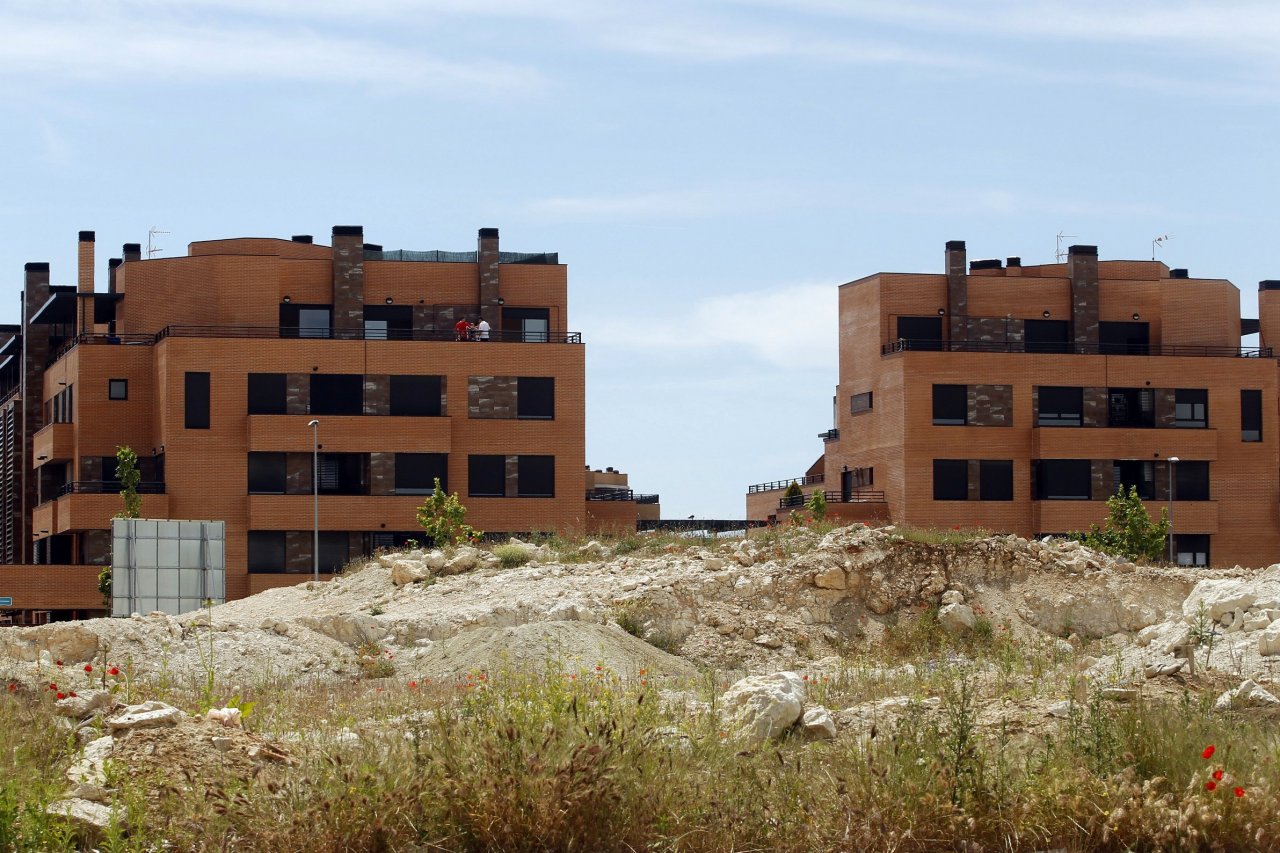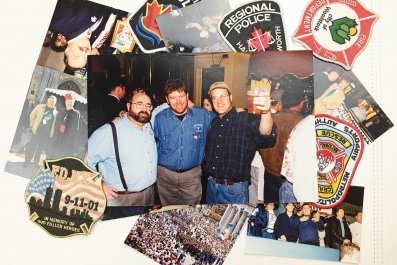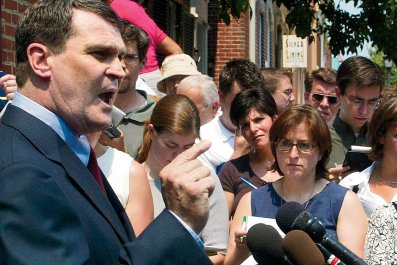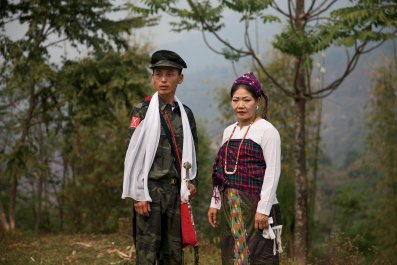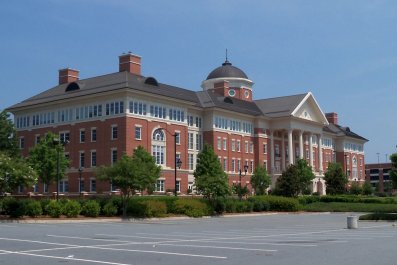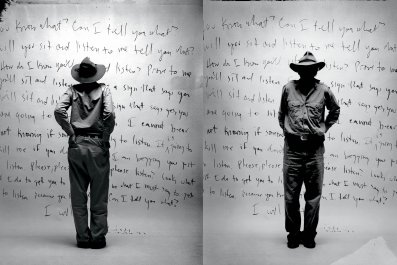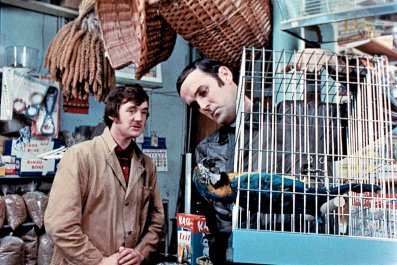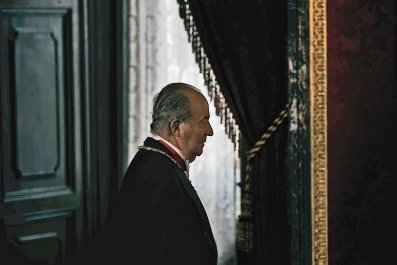The first thing you notice in Valdeluz is the wind. It meets no resistance as it blows hard and loud across the levelled land and the empty lots where apartment blocks were meant to stand. Roads that appear on Google Maps go nowhere and carry no names, meeting neither car nor pedestrian.
Some 65km from Madrid, in the quintessentially Spanish heart of a country riven by competing regional identities, Valdeluz – the notorious ciudad fantasma (ghost town) of the crisis – was conceived at the height of what is sometimes called Spain's economic miracle. In a Catholic nation, whose faith has declined substantially during its three decades of democracy, there is an increasing reluctance to believe in miracles of any kind.
After years of dictatorship, General Franco finally died in 1975 and, after a slow start, Spain spent three giddy decades catching up with its neighbours – culturally as much as economically. King Juan Carlos ascended the throne two days after Franco's death and the shock announcement that he would abdicate earlier this month was a reminder of how much his country has changed.
It is a widely-held belief in Spain that Juan Carlos's deft manoeuvring in the late 1970s helped shepherd the country back to democracy and pluralism, but as with all of Spain's major institutions, the popularity of the monarchy has not lasted. In recent years the royal family has been mired in personal scandals, court cases and corruption allegations that continue to tarnish Spain's political and business elites. The king's personal nadir came in April 2012 – as his subjects struggled to feed themselves from one week to the next, pictures emerged showing that he had been elephant-hunting in Botswana. He apologised, but his image never recovered.
The disconnect between Spain's ordinary people and its rulers is fast becoming a chasm. Although a referendum on the monarchy is unlikely to happen, there have been vocal demands for a new republic, with tens of thousands taking to the streets of Madrid, Barcelona and scores of smaller towns and villages. In a poll for the government-run Centre for Sociological Research (CIS) just before the abdication announcement, the Spanish royal family received an approval rating of just 3.72 out of 10. Incredibly, this was a higher approval rating than that given to the Spanish government, church or parliament. At the European elections in May, Podemos (We Can), an upstart political party barely 100 days old, and campaigning for citizens' government, won an amazing 1.2 million votes and five seats in the European parliament.
END OF THE GOOD TIMES
Spain's crisis now feels so deep, lasting and all-pervasive, it's hard to recall how different the atmosphere was during the economic boom. A huge influx of immigrant labour, tourists and expatriate house-buyers after Spain joined the EU in 1986, and the launch of the euro, in 1999, helped the economy to soar. After decades of backwardness, Spain opened its cultural riches to the world, and the world came to visit: globally it is second only to the United States in revenue from international tourism.
Spain could not stop building. At its peak in the 2000s, construction made up a massive 19% of the Spanish economy, and pay packets as high as €3,000 or €4,000 a month lured teenagers away from school to the building sites of developments like Valdeluz.
The crash that followed looks less like a hangover than a catastrophe that will last a generation. Shock has given way to resignation: "We will just have to learn how to be poor again," one young indignado (outraged) told me in 2012. In May, Spanish prime minister Mariano Rajoy celebrated a fall of 110,000 in unemployment in the year to April 2014 – which sounds like great progress, until we realise the jobless rate is still 25.9%, youth unemployment is still a staggering 57.7%, young graduates are leaving in droves, and Brussels is calling for "considerable additional discretionary efforts" in 2015 and 2016, which translates as two more years of government cuts.
The Spanish crisis is not only hurting an entire people, and leaving permanent bruises in one of Europe's greatest and most historic nations, it threatens to harm the rest of the continent too. Spain has the 5th largest economy in the EU and the 13th in the world – if it sinks further, or is forced to abandon the euro, it may take the whole eurozone with it.
The plans for Valdeluz give a clue to the hubris that characterised the boom years. When Spain's high-speed train network announced in 2004 that it would be building a stop near Guadalajara on the much-travelled Barcelona-Madrid route, it was decided to build an entire new town of 30,000 people on the back of it.
The construction giant Reyal Urbis invested €1.2m in the construction of Valdeluz – it would be their "jewel in the crown", a dormitory town utopia 15 minutes from Guadalajara and less than an hour from Madrid – a place for the comfortable middle classes to rest and play and raise their children amidst lush greenery, away from the dirt, crime and clutter of the capital.
The environment would be tailored to a masterplan for better living: no home would be more than 200m from the nearest "green zone", and the town would have the best sports facilities, schools, leisure facilities and transport. Valdeluz – the valley of light – would even have its own golf course. This, promised the dreamy rhetoric on Reyal Urbis's website, was going to be the future of housing.
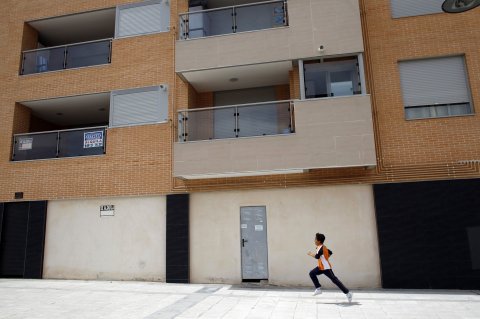
FROZEN
Construction began in 2006, and was to be completed in four phases. The grid of streets and blocks were marked out in the arid dirt of Castilla-La Mancha. The roads were paved, street signs and lamp-posts erected, and parks finished. But only the first of the four phases of apartment blocks – 2,200 of the 9,000 planned homes – were finished when the crisis hit in 2008.
Reyal Urbis halted construction, and the economy never recovered; last year, they finally filed for bankruptcy. In 2008, the utopian town intended for 30,000 of Spain's flourishing bourgeoisie had barely 200 people living in it – the streets and most of the houses were empty. Photographers and news crews from across Europe came to photograph the tumbleweed, and the town was transformed from an emblem of the boom into visual shorthand for the crisis.
Construction feels interrupted, as if the wind had changed in 2008 and everything froze where it stood: on the site of the Valdeluz school there are huge stacks of glass windows outside the skeleton of one of the unfinished buildings. A builder's hard hat lies amidst the debris; rust creeps into a couple of empty beer cans tossed into a building site, a few weeds emerge between the paving stones in Parque Federico Garcia Lorca. Much of the town has been finished; the roads all have their freshly-painted markings and parking spaces, zebra crossings (complete with street signs of walking stick figures, swaying gently in the breeze) and red bicycle lanes. The pavements and parks were all finished and adorned with landscaped arrangements of pebbles, rock formations, bushes and trees, wooden park benches and litter bins. The phone lines, drains and water are all in. The street lamps are all up and have their bulbs in – only their functionality has been gutted; panels surgically removed and wires snipped.
"Valdeluz is not a pueblo, it's an urbanización," explains Raul, the cab driver from Guadalajara station. His distinction is important – an urbanización is a self-contained suburban building project. The word pueblo, meaning a town or a people, carries connotations of having a collective identity, a spirit, a personality – created over centuries. It sounds like a pretty cutting jibe – but over the following days, most residents of Valdeluz echo the idea. Valdeluz has actually grown in population since the first properties went on sale and house prices fell through the floor in 2008: from 197 that year to 726 in 2010, 1,717 in 2012 and 2,459 inhabitants today.
MAYOR OF HOPE TOWN
In that time, one man has positioned himself as the captain of an ambitious rescue mission to turn Valdeluz from a ghost town into a "hope town". Mayor Joaquín Ormazábal has seen the crisis from both sides, moving to the town in 2007 while still working in Madrid as a lawyer for the banking conglomerate Bankia, who, in 2012, requested and received the largest government bailout in Spanish history – €19 billion. Ormazábal was elected as an independent town councillor in 2011. Later that year he resigned from Bankia to take over the Valdeluz mayoralty.
I first tracked Ormazábal down in Valdeluz's snazzy, multi-coloured indoor sports centre – one of the very few intended state-of-the-art public facilities that has been finished. About 150 residents were watching a man in a blonde perm wig and waistcoat do magic with goldfish to the sound of Daft Punk's Get Lucky. The act was going down well. It was part of the town hall's third annual Spring Festival – five days of theatre, storytelling, music and performance, a kind of social stimulus package, a government injection of collective cultural life.
Ormazábal's favourite story about Valdeluz concerns the large sign that greets the town's few visitors: it reads "Cuida Valdeluz". "You know the Spanish verb cuidar, "to care for"? Some of the children here came to me and suggested that instead of Ciudad (city) Valdeluz, our sign should say Cuida Valdeluz, the verb "to care for". That is the spirit we are going for – to create a sense of community, and a sense of place, out of all these problems. I will fight to create a new spirit of Valdeluz – open-minded, optimistic, collective. I want spirit, not ghosts."
Even while exulting the optimistic approach, Ormazábal knows he has detractors. "Some of them whine to me a lot – about the obvious problems we have here: they say 'Why is there no school or no transport?', 'Why is the church not finished?' I think they want an authority figure to blame for the fact they bought at the wrong time. Well, I did the same!"
Ormazábal bought his three-bedroom flat in Valdeluz in 2007 for €240,000 – it is now worth €100,000 – and it is these plunging prices that have brought new residents to the town. You can buy a one-bedroom flat in Valdeluz for €45,000, down from €154,000. Most house prices have fallen by 50-60% in the town – while the remaining developable land has fallen by 80%.
As the screaming children threaten to drown out our conversation, Ormazábal breaks into English and raises his voice above the din: "Tell me, is this a ghost town?" Those children will make or break the town in the years to come, he explains; some 34% of the population of Valdeluz is under 18. Ormazábal gives me a wry smile. "Really, they should call it 'fucking town'. These people never stop having kids."
With his sharp patter, Ormazábal comes across as an ambitious, cultured man, disarmingly frank at times: "People have had enough of professional politicians and professional trade unionists – Spain has too many of both. Perhaps only local politics can save our country now." Would he eventually like to move on or up in politics – to be Mayor of Guadalajara, perhaps? He smiles. "The Mayor of Guadalajara doesn't get visits from Newsweek, or TV crews from around the world. It's a marvellous project for me – it's a unique opportunity because Valdeluz is unique. I have money in the budget, and no deficit. Not every politician has this kind of opportunity, to forge an entirely new community, to turn ghosts into hope."
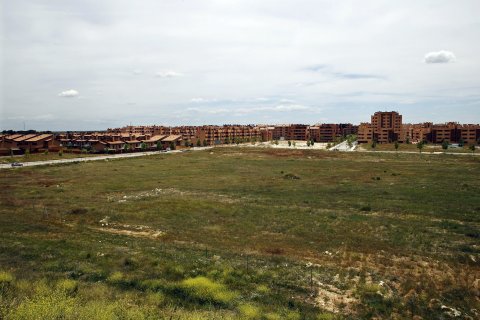
STREET LIFE
For some, hope has been harder to come by. In Café Moon on Sunday morning, the regulars sat at the marble bar and dunked churros in their coffees. A sports car roared past outside, eliciting a moment of awe and derision. Valdeluz's empty streets draw a lot of boy racers.
The proprietor, Yolanda Alvarez, sat at the end of the bar. I showed her an issue of the lavishly produced magazine produced by Ormazábal's office, with an article where the mayor was boasting of an increase in population of 283 people in 2013, going on to blame the regional government for "strangling" possibilities for future development in the town. Was this fair? She shrugged.
"It's complicated, but a lot of the problems in the town are with the mayor, not the government. A school is the most important thing right now, along with public transport – there are so few buses. I'm probably the only person in Valdeluz who can get to work without a car! Meanwhile, the kids are so bored, there's nothing for them to do for fun, so they stay inside." Yolanda's teenage daughter has taken to working shifts in the bar. "Without a car, to drive to Guadalajara, you have nothing."
Does she like living here? "It's quiet. But it's too quiet. You don't have much choice about whether you like the quiet – or whether you live here. No one will ever be able to sell without losing a large amount of money."
Other customers asked not to be named when sharing their pessimism – one pensioner who bought in 2009 with his wife joked bleakly that he had bought his final home. "I don't see how I'll be leaving Valdeluz alive, not now."
In the completed quarter of Valdeluz, alarm and security signs are prominently displayed, along with numerous "for sale" and "to rent" signs. The Caja Madrid bank branch has closed down, and had its ATM removed, though a branch of Santander remains, along with a couple of food shops and cafés, a hairdresser's, and little else.
It is the bricked-in shop fronts at eye level that suck the social life out of the city; a reminder of the thriving -middle-class town that was meant to be. Demographically, this is a town of the comfortable middle-classes – Partido Popular voters, driving new Saabs and Hyundais.
Most of the residents work in the professions in Madrid. But Valdeluz's still half-built school lies amidst rubble. Even unfinished, the school is colossal – it was to be the largest in the province. Instead, like Yolanda, most Valdeluz parents now send their children to school in Horche, 5km away.
The spring festival closed with a market on Plaza de la Encina, a few stalls selling jewellery and T-shirts bearing the faces of Che and flamenco legend Camarón, while a samba band warmed up their drums. The finale was to be a parade passing through the streets.
CRISIS IS CARTHARSIS
The houses in Valdeluz are pleasant enough – clean, well apportioned, many with balconies overlooking communal patio squares and swimming pools, on-site gyms, car parks and concierges.
"Our house is very nice," a young father in his 30s called Paco said, straining to make himself heard above the drumming, "but you know, the inside is not everything. A casa in isolation from a community is not a castle, but a hutch."
As the "samba reggae army" marched around the normally empty steets, the drums spooked an Alsatian dog, whose barks echoed around the Avenida de Maria Moliner. The dogs aren't used to the noise, Paco laughed. A Spanish parade through empty streets was poignant – it is supposed to be disrupting ordinary life in the name of a fiesta.
"Toma las calles!" ran the slogan of the Spanish indignados – "Take the streets!" A handful of people came briefly to their balconies to watch the unusual activity – namely, any activity – before returning inside. It was a racket almost like thunder, but it worked, and by the finale 150 or so people had gathered in the main square, about a third of them children, playing on their bikes and skateboards. There were prams and dogs and young parents galore – it was a vision of the sociability that's needed to make this more than just a network of empty streets. Sunlight sparked off the beer glasses and expensive watches, and the chatter was of holidays, cars and schools – Valdeluz is not a poor town, but a middle-class community sold out by the crisis.
Occasionally, a high-speed train whistles past the town like a bullet – a taunting reminder of the muddled thinking that led to the conception of Valdeluz in the first place. So few trains stop at the Valdeluz ghost station that at some times of day it would be faster to take the train 500km to Barcelona and back to Madrid, to get to the capital. Unsurprisingly, commuters from Guadalajara have chosen to pay €4 for a 45 minute regular-speed journey to Madrid, rather than drive 15 minutes to Valdeluz, park, and pay €17 for a 30 minute journey. "There's no logic to any of it," Ormazábal says of the station. "Why they built it is still a mystery to me."
Later, after Sunday lunch in the bustling restaurant of the Valdeluz Golf Club, Ormazábal took me to meet some ghosts from an altogether bleaker period in Spanish history. Seemingly unbeknown to the locals, down a dirt track, through a maze of trees, on land owned by the golf course, was a small door, about knee height, with a rock holding it shut. With neither fanfare nor plaque, this was the Posición Saldon; one of the most important bunkers from the Spanish civil war.
While the Fascists besieiged Madrid, much of the loyalist Republican high command, including the president of the government, Juan Negrín, holed up here from 1937 until their final defeat in 1939.
Stooping and holding torches, we crept down through a network of tunnels, past the carcasses of a couple of dogs that had got stuck down there, through a cloud of moths, and marvelled humbly at the scale of it: there were 10 or more rooms hollowed out, including a kitchen complete with tiles, even (long dormant) electric cables.
Like too much Spanish history, its memory and meaning has been awkwardly buried in the hope of a brighter future. After 10 minutes of claustrophobic exploring, we emerged blinking into the light and climbed to an elevated look-out over the town, gazing over the totality of Valdeluz, the quarter that was finished and the three that were not.
"Do you know the saying," Ormazábal asks me, "'Crisis is catharsis'? I'm hoping that's true."


